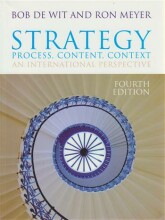Summary: Clinical Pharmacokinetics And Pharmacodynamics Concepts And Applications | 9780781750097 | Malcolm Rowland, et al
- This + 400k other summaries
- A unique study and practice tool
- Never study anything twice again
- Get the grades you hope for
- 100% sure, 100% understanding
Read the summary and the most important questions on Clinical Pharmacokinetics and Pharmacodynamics Concepts and Applications | 9780781750097 | Malcolm Rowland; Thomas N. Tozer
-
1 Therapeutic relevance
This is a preview. There are 22 more flashcards available for chapter 1
Show more cards here -
Wat zijn de toedieningswegen extravasculair?
Parenteraal: intramusculair, subcutaan, intranassaal, inhalatie, pulmonaal, transdermaal.
Enteraal: oraal, rectaal, sublinguaal
Hierbij is er dus een absorptie nodig zodat er een systemisch effect kan plaatsvinden. -
2 Fundamental concepts and terminology
This is a preview. There are 23 more flashcards available for chapter 2
Show more cards here -
What is the target concentration paradigm?
- Before a drug can work, it must reach a certain minimum concentration at the site of action.
- the drug must avoid to exceed a certain maximum concentration.
So the aim is to keep the plasmaconcentration within the therapeutic window. However for every patient this therapeutic window is different. -
What kind of PK and PD models do we have?
PK-model: a compartmental model
PD-model: 1) growth of bacteria in the absence of antibiotic 2) killing of bacteria dependent on concentration of antibiotic (sigmoid E max model) -
What is the meaning of the gamma in the PD formula?
It is a factor for the steepness of the curve. The higher this factor the steeper the curve. -
So, what is the difference between PK and PD?
PK is plotted into an concentration-time curve and PD is plotted into an effect-concentration curve (Y-X). -
What does a PK-PD model combine?
- A model describing drug concentrations versus time (PK)
- A model describing the relationship of effect versus concentration (PD)
- A statistical model describing variation in intra- and interindividual PK and PD.
This all to predict the time-course and variability of effect versus time.
Note: only mechanistic PK-PD models can be relied on for extrapolation. (for prediction versus description) -
What is the sigmoid Emax model?
It takes into account the Effect, the baseline effect, the maximum drug effect, the drug concentration at the effect site, the drug concentration at 50% of Emax and the steepness of concentration -effect relationship.
The Emax stays almost the same when the gamma changes. The Emax is the middle.
When gamma = 1, then the effect will be proportional to the receptor occupancy. -
What is the growth-kill PK-PD model for antibiotics?
It takes into account:
- The number of colony forming unit (CFU) per ml
- time
- growth rate in absence of antibiotic
- maximal killing rate of antibiotic
- antibiotic concentration at the site of action
- antibiotic concentration at 50% of Emax
- steepness of concentration-effect relationship -
What is the PKPD of antibiotics?
- It is concentration dependent: the killing rate increases with the concentration (e.g. aminoglycosides, vancomycin or fluoroquinolones)
- It can be time-dependent the killing rate is independent of the concentration. (e.g. beta-lactams, erythromycin)
There is also a post-antibiotic effect. -
What is the post-antibiotic effect?
This is the delayed regrowth of bacteria following an exposure of an antibiotic.
- Higher grades + faster learning
- Never study anything twice
- 100% sure, 100% understanding

































